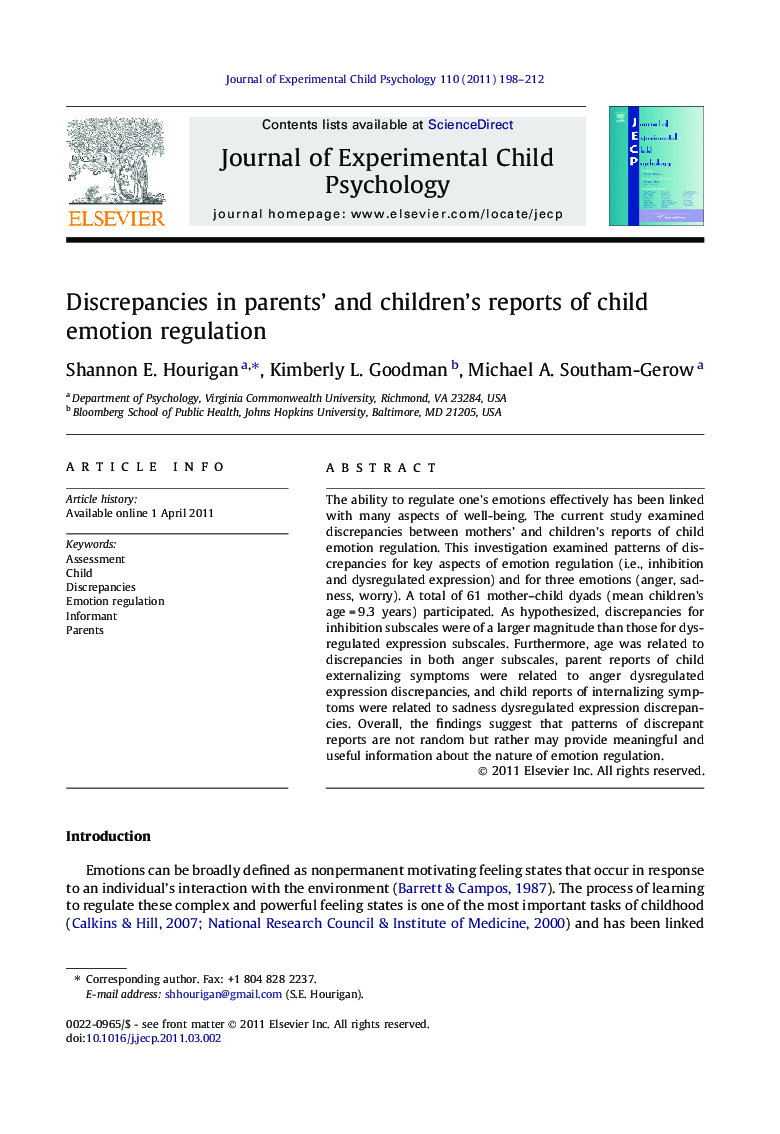| Article ID | Journal | Published Year | Pages | File Type |
|---|---|---|---|---|
| 918423 | Journal of Experimental Child Psychology | 2011 | 15 Pages |
The ability to regulate one’s emotions effectively has been linked with many aspects of well-being. The current study examined discrepancies between mothers’ and children’s reports of child emotion regulation. This investigation examined patterns of discrepancies for key aspects of emotion regulation (i.e., inhibition and dysregulated expression) and for three emotions (anger, sadness, worry). A total of 61 mother–child dyads (mean children’s age = 9.3 years) participated. As hypothesized, discrepancies for inhibition subscales were of a larger magnitude than those for dysregulated expression subscales. Furthermore, age was related to discrepancies in both anger subscales, parent reports of child externalizing symptoms were related to anger dysregulated expression discrepancies, and child reports of internalizing symptoms were related to sadness dysregulated expression discrepancies. Overall, the findings suggest that patterns of discrepant reports are not random but rather may provide meaningful and useful information about the nature of emotion regulation.
